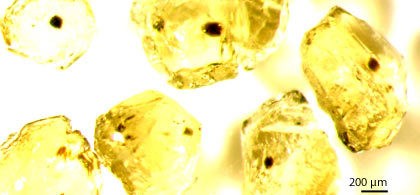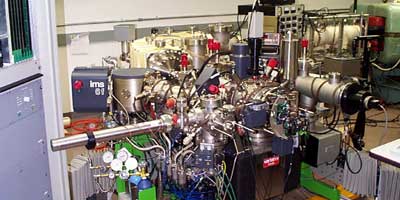| SCRIPPS INSTITUTION OF OCEANOGRAPHY, UCSD |

| the expedition | |
| the science | |
| tools & techniques | |
| japanese life | |
| daily journal | |
| the team | |
|
:: VOLCANOES :: Fuji Hakone Oshima Nii-Jima • Shikinejima Hachijo-Jima Aoga-Shima |
|
|||||||||||||||||||||||||||||||||||||||||||||||||||||||||||||||||||||||||||||||||||||||||||||||||||||||||
Ion Probes

Ion microprobes are analytical tools used by geochemists to measure isotopes and elemental abundances of very small samples. In our experiments, we will be using the ion microprobe to analyze the composition of tiny bits of magma called melt inclusions that are trapped in olivine grains found at volcanoes in the Izu-Bonin Islands. The ion microprobe uses secondary ion mass spectrometry (SIMS), in which a focused beam of primary ions bombards a solid sample and removes material by sputtering.

This sputtering of material creates positive and negative ions, called secondary ions. These secondary ions are ejected from the sample surface, then accelerated into a mass spectrometer and separated according to their mass-to-charge ratio before being detected. Using the Cameca 6F ion microprobe at the Carnegie Institution of Washington, we will determine the composition of major volatiles such as carbon dioxide, water, chlorine, fluorine and sulfur in our inclusions, as well as measure isotopes of these elements, in addition to certain trace elements.
The chemistry of both the melt inclusions and the olivine grains will be determined using an electron microprobe. The electron
microprobe is similar to an ion microprobe, but uses a high-energy focused beam of electrons, rather than ions. When the electrons
hit the sample surface, X-rays characteristic of particular elements are emitted. The X-rays are diffracted by analyzing crystals
and counted using detectors. The chemical composition of a sample is determined by comparing the intensity of X-rays to standards
of known composition.
